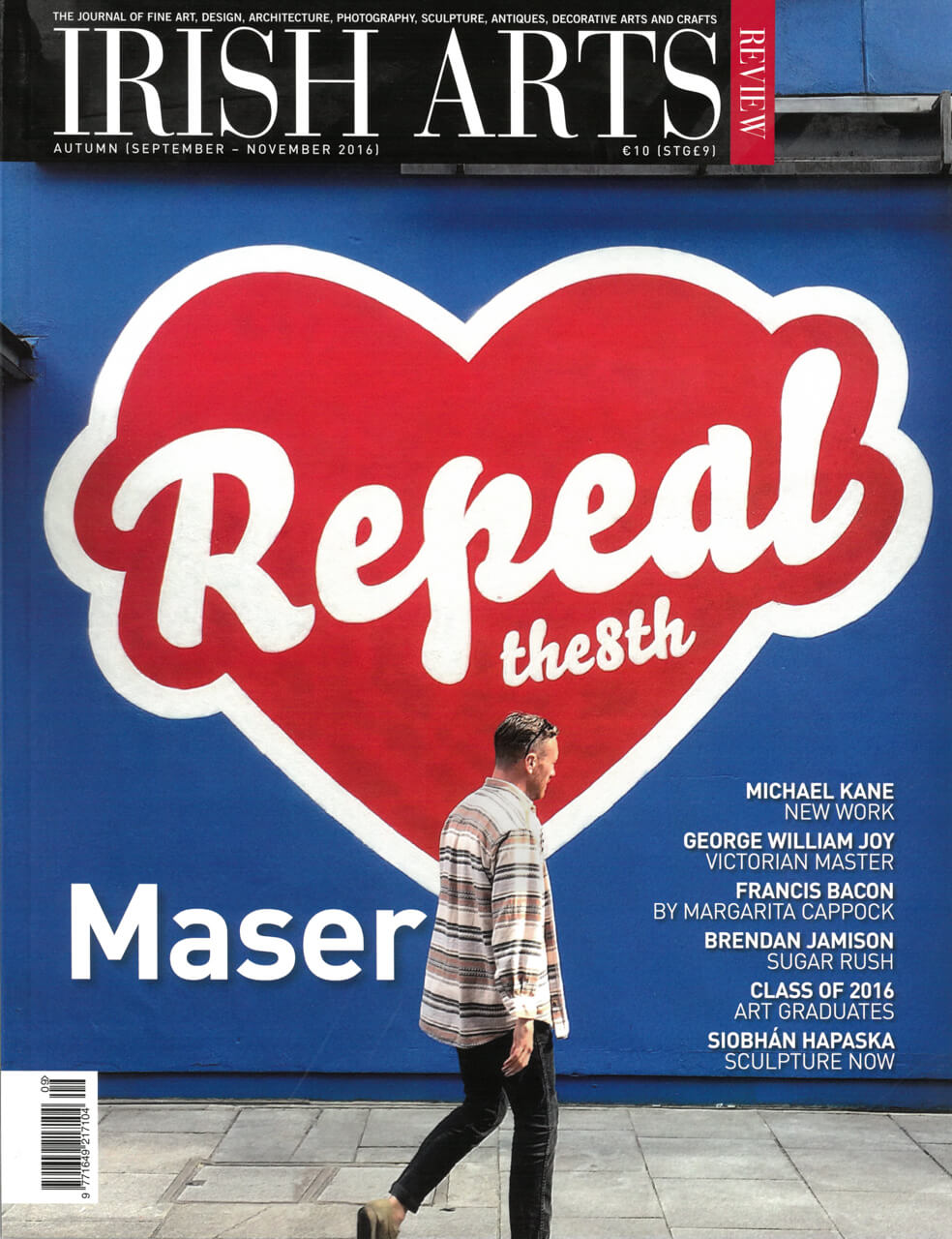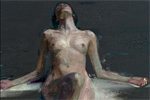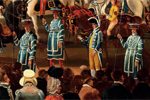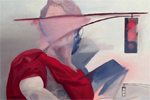
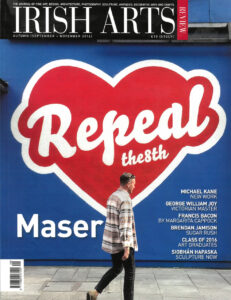
Behind the bustle and colour of the 2016 graduate shows Gerry Walker finds a wealth of well-researched, accomplished projects.
Graduate exhibitions can have the appearance of being casually constructed events. Appearances may be misleading however. Assessment procedures for art graduates are systematically formulated and rigorously applied. A graduate project objective has to be evenly developed and concluded. The end result can look deceptively casual and may not immediately reveal the many levels of significance and meaning invested in its gestation – in addition the student is expected to demonstrate a knowledge of art history and an informed awareness of working within a cultural context.
Among this year’s cohort of graduates, individuality reigns supreme with varying degrees of excellence coming to the fore. Leaving slavish adherence to perennial fashion aside, and there appears to be very little of it in evidence here, it is difficult to discern an obvious trend or Zeitgeist among the class of 2016. There is no canon of orthodoxies which says that there should be one, but some threads of commonality are discernible. The respective high achievers share distinct elements of interpretative inquiry, which frequently defer to legacy and tradition and seek to assert personal ownership of concepts and presentations.
In the Dublin Institute of Technology (DIT) Edit Elias produced ‘Congo Mémoire’ – a series of poignant photo close-ups of hands holding symbolic objects which interpret a narrative of colonial exploitation by referencing the experiences of Congolese expatriates here.
From the National Film School in D√∫n Laoghaire Institute of Art, Design and Technology (IADT) Hugh Mulhern’s semi-biographical film The Cyclops explores the problems of drink and drug culture among young Irish men. He is credited with having produced a compelling piece of cinematic storytelling which is remarkable for its gritty realism and technical excellence.
Callum Holgate’s final year architecture project at the University of Ulster attempts to envisage a ‘Beckett Writers’ Centre’ located on the site of the old sea baths in D√∫n Laoghaire. The project reflects a concern with composition, topography [there are alignments with the east pier and Joyces Tower at Sandycove] and environmental enhancement.
National College of Art and Design (NCAD) Ceramics student, Jade Breen, produced a series of slipcast earthenware vessels which are rooted in nostalgia. They recall elements of familial domestic kitchenware but embrace contemporary forms without over-emphasising sentimentality. Also in NCAD, painting students Julia Dubsky and Jonathan Donnelly rediscover the creative force of play with the medium and materials of paint. She expresses her exuberant sense of discovery in a series of remarkable variety whilst he manipulates his graphic-like imagery with purposeful skill.
In Cork (CCAD), Tomas Penc flies the flag for installation in his graduate project in part homage to Carl Andre, Robert Morris and Laurie Anderson. He references our contemporary engagement with technology and and explores our ability to create and navigate perceptual experiences.
Limerick School of Art and Design [LIT] graduates Emma Zukovic [Fine Art] and Liadán Scott-Keogh [Fashion], have harnessed digital imagery to striking effect. Zukovic’s tri-screen installation and Scott-Keogh’s dress prints share surreal qualities which are provocative and at times unsettling. Galway/Mayo Institute of technology [GMIT], has uniquely captured the art of furniture-making in Letterfrack. Graduate Brendan McGarry has produced work which fuses the functional aesthetic of Bauhaus design with the demands of new technology and industrial processes.
Not for the first time the legacy of past achievements has featured prominently in the creative endeavours of this national graduate mix. History, tradition and personal experiences have discreetly reasserted their claims. Gone is that postmodern eclecticism which in the course of its leaden trajectory from the banal to the profound, never really made it beyond dull. It would appear that the pleasurable imperative of making is enjoying a resurgence and we are back living in a post-ironic age.
Gerry Walker is a freelance writer and art critic.
 Tomas Penc
Tomas Penc
BA Honours Fine Art, CIT Crawford College of Art and Design

TomaÃÅsÃå Penc Penc Studio research for ANGULAR OPPRESSORS 2016 chimney well, cast aluminium alloy 26x10x10cm
Tomas Penc’s accomplished degree presentation at CCAD draws on our ambivalent relationship with technology, while formally conjuring a post-minimalist re-imagining of Robert Morris’ cubes by way of Rebecca Horn’s performative, musical sculptures. Four stout chimneys made from reclaimed household brick, each with a steel frame extension, support an exposed mechanism of wires and violin bow. Each ‘chimney’ is accompanied by a miniature tower in cast aluminium, backed by an arced sheet of embossed paper that acts as a diaphragm. On entering the space, the viewer provokes each structure into action and the violin bow is drawn across a rotating bar to emit a sonorous tone. Moving through the room, weaving through the structures, triggers each of the towers to emit their own unique resonance until a buzzing harmony is reached. As Maurice Merleau-Ponty reminds us, it is in the communion and integration of the senses that perception occurs; and the body, as much as it is a seeing body, is also ‘an object which…reverberates to all sounds.’ These idiosyncratic structures which contrast the supposed solidity of sculpture with the immateriality of sound also collapse two registers of spatial experience. The towers recall Carl Andre’s call for ‘sculpture as place’, whereby the body calibrates space as it is shaped by the sculptural objects in the gallery. Meanwhile, the ear is a vital instrument of balance, sensitized to register the external vibrations of the environment and so internalizing the world outside itself. Penc’s installation literally brings the body of the viewer into play: indeed, his structures makes one less a passive viewer than the orchestrator of our perceptual experience. Tomas Penc is the recipient of CIT Good Start Exhibition Award and the National Sculpture Factory CCAD Graduate Award 2016.
Sarah Kelleher is an independent arts writer and curator, and a PhD candidate in UCC supported by the Irish Research Council.

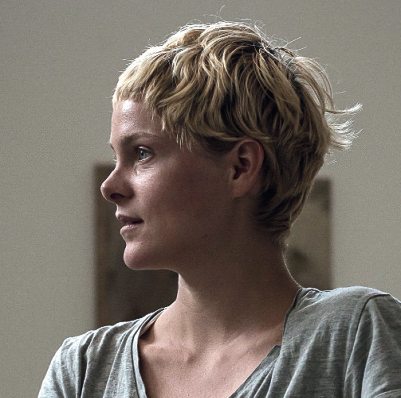 Jonathan Donnelly and Julia Dubsky
Jonathan Donnelly and Julia Dubsky
BA Honours Degree Fine Art, National College of Art and Design
This current degree programme in NCAD is a hybrid. Four years of study have been shortened to three. Those who have completed their third year are now graduating together with the final fourth year cohort. This means in effect that there are over sixty graduates on show on the campus and this has an immediate impact on the range and quality of what’s on offer. The complexities of this arrangement are manifestly apparent in an uneveness of quality, and the dispersed presentation of the work on display at a variety of venues makes for difficulty in considering an overview. Nevertheless there is excellence within diversity here. As was the case in last year’s show the movement away from process to product continues apace. People have rediscovered the pleasure of making objects again and have largely eschewed the practice of advancing lengthy written descriptions as virtual substitutes for what is generally regarded as painting. The anxiety about the nature and role of painting still continues and artspeak has not gone away, but the trajectory of interests among the coterie of 2016 is well asserted.
The work of Jonathan Donnelly and Julia Dubsky is instructive in that it showcases the enjoyment of immediacy within creativity. Donnelly shows a suite of figurative oil paintings, which are politically motivated, exploring the social constructs that define gender imaging. He chooses military conflict and classical historical references as a conduit for interpreting dominance and subordination, ideology and vulnerability, power and masculinity. That sounds like a tall order but in a manner which is bold and declamatory he manages to imbue his graphic-like imagery with a degree of intensity, variety and force that minimizes ambiguity without constraining the interpretative options for the viewer. Dubsky has a direct and refreshing approach to painting. She makes the point that her work is a response to’ practicing painting per se’. It is a celebration of the medium itself. She paints what she likes with no preconceived opinions as to what the possible outcomes might be. Intriguingly she likens the painting process unto Milan Kundera’s description of flirtation: a promise with no guarantee of being kept. This is not randomized activity nor is it a restatement of formalist contrivances. It is explorative and instructive and a pleasure to create and appreciate.
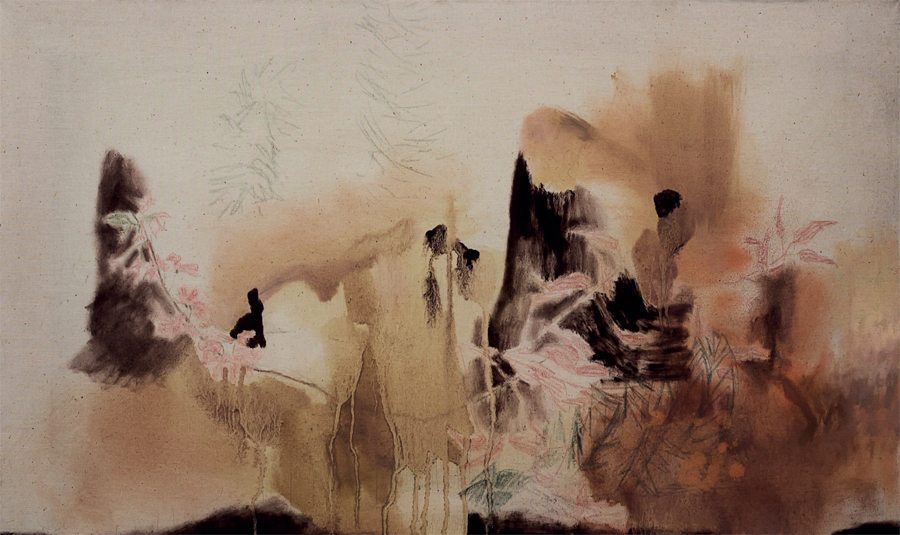
Julia Dubsky (UNTITLED) Prince 2016 Blossoms, chillies and coloured pencil on calico 44×72.5×2.5cm Photo: Matthew Thompson
Graduate shows are not just about students, they reveal and scrutinize courses as well. The composite course underway at NCAD has produced varied results – hugely positive in the main. Some curiosities arise however in that it is possible to discern a qualitative difference between some who completed three years, and others four. Many of the former show great expertise, some of the latter less so. Abilities are variables and courses are constants. The institution would be advised to consider some of the anomalies in this year’s outcomes closely.
Gerry Walker is a freelance writer and art critic.
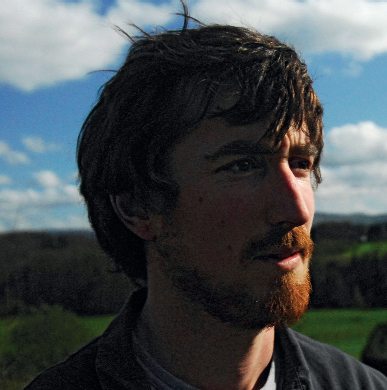 Brendan McGarry
Brendan McGarry
B.Sc. (Hons) in Furniture Design and Manufacture,GMIT Letterfrack National Centre for Excellence in Furniture Design and Technology
Brendan McGarry returned to fulltime education as a mature student in 2014 when the recession took its toll on his carpentry business in Dublin. McGarry headed west and embarked on a four-year programme of study at the National Centre for Excellence in Furniture Design and Technology at GMIT Letterfrack. An advanced skill set and love of making allowed him to develop his knowledge of the design process and new technologies in product design. During his work placement in year three, McGarry worked for Ganter Interior in Germany, and spent his summers as a student working for the Dublin-based furniture company Klimmek-Henderson. This experience facilitated a repositioning in thinking in relation to his chosen discipline.
McGarry’s undergraduate work illustrates his ability to take his skills in a new direction. The distinctive form of his Trio lamp was inspired by aerial views of the Connemara coastline. Finished in Danish oil, the three sandblasted ash frames of this design embrace driftwood aesthetics, unified by the opal diffuser. The tactile finish to the ash accentuates the natural beauty of the wood and is complemented by the organic shadow lines created by the dispersed light. The beauty of the finished product belies its self-assembly feature.
In response to a brief to design a chair that could be sold in volume, Brendan created Ch. 53. The result is an expression of originality and innovation in industrial design. The chair’s eclectic mix of aerodynamic and organic shapes are strong design features. The fundamental objective of user comfort is achieved through delicate, complex engineering. The formed ply backrest profile was inspired by a bird’s wing formation before landing, creating a visual invitation to the user to sit. The architectural jointing system of the oak-frame components provide both strength and visual sophistication. The seat’s curved top surface assists even weight distribution, encouraging natural circulation through the body whilst the user is seated.
Continuing the legacy of Bauhaus design McGarry’s work is distinguished by his ability to reconcile superb craftsmanship with new technologies and industrial processes. His sensibility to material and process will secure Brendan Mc Garry’s future in Irish furniture design.
Susan Rogers is a Lecturer in Furniture and Design History at the National Centre for Excellence in Furniture Design and Technology GMIT Letterfrack.
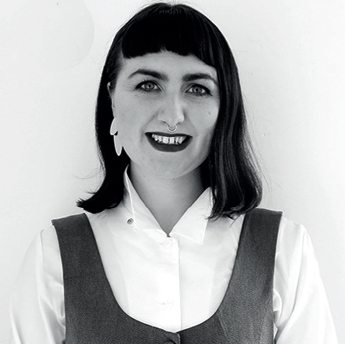 Liadán Scott-Keogh
Liadán Scott-Keogh
BA Honours Degree Fashion Design, Limerick School of Art and Design (LIT)
Liadán Scott-Keogh won this year’s AIB/IFIL Work Placement Bursary with her collection titled ‘Civil Contingency’. There is a comfort, an easy calm, in the way she discusses her work that indicates both a sense of purpose and a sense of enjoyment.
She did not look to Old Masters, contemporary abstract painters or obscure architects for inspiration as many graduates do. Instead she searched independently of such influences, finding her theme in a sense of history repeating itself through housing issues in Ireland.
Reflecting on how the Ballymun towers rose in answer to the housing crisis of the 1960s, eventually to be razed at the cusp of another such crisis in 2015, she considered the process of building up, and breaking down. Scott-Keogh photographed the buildings through their final phases from edifices built on hope to eventual dereliction.
The photographic images were used to create unique prints. Applied across pleated or draped fabrics, they move and break apart, sundered through natural movement as the pleats and folds open and sway. The colour palette has a hard edge, the impact is clear and instant. The concept is well developed through a series of reworked classic pieces. Each garment is infused with an edgy appeal and ‘flip sided’ with clear commercial possibilities. Scott-Keogh’s collection is creative, competent and in all respects ready for market.
Scott-Keogh will now participate in a three-month work placement in London with the much praised Irish designer Richard Malone. His clear imprimatur at the judging session suggests it will be an exciting and valuable experience for a designer with real promise.
Liadán Scott-Keogh has been awarded the New Ireland Assurance Graduate Award 2016.
Eddie Shanahan is Chairperson of the Council of Irish Fashion Designers.
 Callum Holgate
Callum Holgate
BA Honours Degree Architecture, University of Ulster
Callum Holgate’s final studio project this year impresses with equally high levels of skill, rigour and ambition to deliver a mature and sophisticated proposal for a Samuel Beckett Writers’ Centre on the site of the old sea baths in D√∫n Laoghaire.
The dense portfolio of delicately drawn rough work, models and sketchbooks that accompany this project, reveal intelligent investigations into morphology, topography, programme and composition, as well as into the nature of Beckett’s work. Particular emphasis falls on Beckett’s performance piece Quad, in which four non-speaking characters trace interlocking and sychronized paths around and across a square stage to a percussive accompaniment. In Holgate’s proposal these characters are reframed as architectural actors: ‘the wanderer’ (coastal dog-walker, jogger), ‘the performer and spectator’, ‘the curious’ and ‘the writer’. The bathhouse site becomes the setting for the actors’ performances, providing nodal points in each actor’s journey around, through and within the writers’ centre. A small, sculpted cove captures the rise and fall of the tide at the heart of the complex, providing a rhythmic backdrop and combining with shifts in coastal weather to enrich the spatial composition.
Context-specific opportunities within this ordering strategy bind the abstraction of the concept to the specifics of D√∫n Laoghaire. For example, a look-out point aligned with D√∫n Laoghaire’s east pier, focuses on Joyce’s Martello tower at Sandy Cove and the retained fa√ßade of the Bath House provides a threshold to the new coastal landscape and filters memories of the town’s Victorian heyday.
The result is a substantial set of choreographed spatial relationships between personal and public, interior and exterior, abstract and real. Some effort is required to remember that this is the work of an undergraduate student.
Mike McQueen is Course Director for the BA Honours Architecture Course at Ulster University.
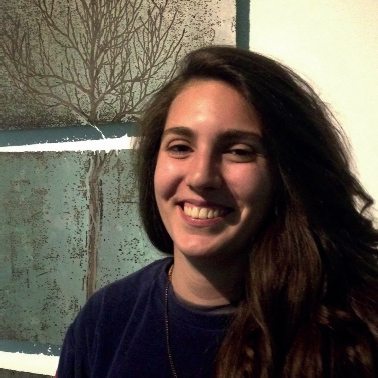 Emma Zukovic
Emma Zukovic
BA Honours Degree in Fine Art, Limerick School of Art and Design (LIT)
The projected multi-screen installation is not uncommon in contemporary art. Often overlaid with a solemn voice-over, the genre of darkly lit video art offers an immediate visual punch and immersive atmosphere – but it’s familiarity poses a problem – cannibalizing the potential for such a piece to be understood beyond its formal charm.
In the face of familiarity, Emma Zukovic has opted to stamp her authorship on all possible points; from revealing personal biographical details throughout, to the pervasiveness of subtle editing techniques, and extending to composing the soundtrack. Zukovic’s multi-screen installation demonstrates a strong technical competency, a command of palette and clever editing.
Certain words yield too easily to feel sufficient to describe the experience; evocative, poetic and so on. Repeat viewings are necessary, not just to break beyond the familiar but to decipher certain scenes; we see a thick, gnarled stump which is surrounded by a chokingly opaque smoke, only pierced by occasional peeks of glare from the sunlight. Slowly, it becomes apparent that the scene was looped to go forwards and backwards in time. This manipulation of time, alongside other captivating scenes, such as a family home on fire, or a herd of horses running across a barren landscape, are uncanny individually – and collectively more affective as discrete scenes clash and crash creating a surreal and strange world. With this installation Zukovic has begun a bold trajectory which I am excited to follow.
Chris Hayes is Co-Director at Ormston House, Limerick and writes a weekly arts column for the Limerick Leader.
 Jade Breen
Jade Breen
BDes Honours Degree Craft Design, National College of Art and Design
Dublin-born Jade Breen graduated from the National College of Art and Design where she specialized in ceramics. Breen is among the last cohort of NCAD’s four-year degree as the college now has a three-year programme. In Breen we celebrate an individual of noticeable ability who has had time to evolve her work.
Breen asks ‘Do the objects we surround ourselves with tell a story’? While the field of nostalgia has been harvested many times over the years, she brings her perspective to the topic influenced by her great-grandmother’s domestic kitchenware: flat irons come to mind. There is nothing sweet or sentimental in her reserved, small-scale, slip cast earthenware vessels. They speak of contemporary form and have points in common with Belfast’s Derek Wilson, who she says, has been an inspiration and, more tangentially, the French-based Irish ceramic artist Lucy Morrow featured in Ceramics Ireland issue 37, 2016. There is also a hint of the pattern-cutter in her neatly tailored, intimate objects. Breen has worked as a fashion stylist and she seems to have brought some of this experience to bear in the production of her subtly varied degree show collection of ninety-two pieces, cast in series, some of which are bound and knotted in luminous coloured filament.
Her work has already been seen in group exhibitions and one of her collaborative pieces, Life’s Journey, is part of Irish Life’s public collection. Breen plans a further development in her educational pathway having been accepted onto the MSc Medical Device Design programme at NCAD.
Neil Read is former head of Ceramics, Glass & Metals at the National College of Art & Design.
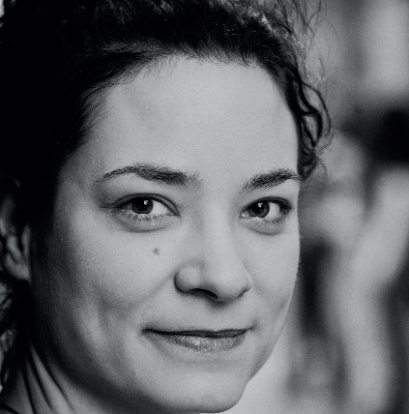 Edit Elias
Edit Elias
BA Honours Photography, School of Media, Dublin institute of Technology
Crystalized by such accounts as Joseph Conrad’s Heart of Darkness, the Democratic Republic of Congo (DRC) has long been exoticised and deeply misunderstood in the collective imagination. A narrative of violence has shrouded the land for centuries; from Leopold II of Belgium’s colonization between 1885 and 1908, to the years following independence which witnessed millions of deaths through violence and famine, untold numbers of rape and wholesale abuse of children as armed conscripts.
Rather than reinforcing this narrative of violence, Edit Elias – this year’s leading photography graduate from DIT – trades the often ‘othering’, neocolonial gaze of the documentary photographer for a critique of the continuous exploitation of the country’s natural wealth. Taking the form of a photobook and an exhibition, Congo Mémoire explores personal accounts of four members of the DRC community in Ireland. The project contains portraits, family snapshots, hand-written text as well as close-up images of each participant’s hands holding miniature testimonies to the DRC’s history of colonization.
In one image, a participant holds an eraser, its tiny size belying its significance in relation to the mass economic exploitation of Congo’s rubber plantations. The focus on the hand creates a poignant link to the dismembering of the indigenous population that became synonymous with Leopold’s brutal rule.
Given its history of UN peacekeeping in the Congo between 1960 and 1964, Ireland provides a rich context for the work and by invoking the family album and the participant confessional, Elias’ project reveals itself as a self-consciously critical yet quiet exploration which moves beyond reductive Conradian notions of the DRC as a land ‘diseased with madness’.
Sarah Allen works at The Photographers’ Gallery, London.
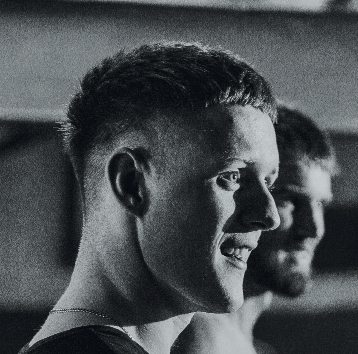 Hugh Mulhern
Hugh Mulhern
BA Honours Film and Television Production, The National Film School, D√∫n Laoghaire Institute of Art, Design & Technology
In developing the screenplay for his graduate film Hugh Mulhern drew on his own family story and on filmmakers like Larry Clarke and Lynne Ramsey. It’s a gritty piece of realism and an intensely personal engagement with cinematic storytelling.
Although The Cyclops isn’t wholly biographical it is drawn from personal experience. Mulhern wanted to explore drink and drug culture amongst young Irish men and on a more personal level he wanted to examine a family dynamic following the departure of an alcoholic parent. In November of 2015, a month after he began writing the film, Mulhern’s own father died of alcohol poisoning.
The film is essentially about Irish men and their reliance on intoxication. Mulhern could see it in his friends, in himself and he saw it in his father: ‘There’s a blight of emotional stagnation and addiction amongst Irish men, we have the fourth highest suicide rate in Europe of men aged between 16-21 and although The Cyclops doesn’t deal with suicide directly it is definitely something very present in the collective psyche of my characters.’ From the earliest drafts of the script he wanted the focus on the relationship between two brothers in the shadow of their father. One of the brothers is repeating the father’s behaviour, while the other is determined not to. The drama revolves around the strain this conflict puts on their relationship.
Mulhern cast Seán Doyle and Dafhyd Flynn as the teenage brothers, Luka and Lip, and they both give entirely convincing and naturalistic performances. Although the tension between them is well played, it is in the tender moments that they are most compelling.
Moving from flashback to the present drama builds tension and reveals a compelling portrait of a family caught in crisis. It’s an ambitious strategy for a debut film and one that pays dividends. The final confrontation between the brothers is heartfelt and quietly devastating.
The film is technically superb. The Cyclops was car
